In a previous post I mentioned that I had been encouraged by the number of Rough-legged Hawks (roughies) I’ve been seeing this fall. Well I’m delighted to report that the situation continues to improve. On virtually every photo expedition over the last few weeks I’ve seen several of them and on two recent trips we’ve made about a dozen sightings of different individuals each time.
However getting good photos of them is a different story altogether. After a season in the high arctic they’re very unapproachable and even when I have been able to get reasonably close they’re usually perched on an unattractive sign or post and take off away from me. All that changed a few days ago though when we found one very cooperative bird. This species has the most different male and female plumages (sexual dimorphism) of all our buteos and I’m quite sure this is a light phase female.
1/1000, f/6.3, ISO 640, 500 f/4, 1.4 tc
We first spotted this bird on a low wooden post that resembled a piling and I was pleasantly surprised that it let us approach (in my vehicle) with no signs of nervousness. It was early on a cold, frosty morning and while looking through the viewfinder I assumed that the material on top of the post was spider silk that had collected dew and then frozen. But after looking at the photos at home I wasn’t so sure so the next day I walked over to the post to check it out. Duh – should have known. It was frosted bison fur. This was Antelope Island after all. Obviously, bison had used it as a scratching post.
1/800, f/8, ISO 640, 500 f/4, 1.4 tc
It was a partly cloudy day and naturally I lost my good light soon after getting close to the hawk. But since the roughie’s tail was hidden in the previous photo (and others like them) I decided to try to take advantage of the lack of direct light to get an angle on the bird that would at least show some of the tail (with direct light on the front of the bird the tail would be so shaded as to have shown no detail at all) so I slowly pulled forward in the pickup to get closer and a look at the tail. The hawk didn’t even flinch.
1/1200, f/6.3, ISO 640, 500 f/4, 1.4 tc
At one point she apparently spotted a vole in the grasses nearby and flew off to try to capture it but a few seconds later she returned, empty clawed, to another post just a few feet away from the previous perch. And this time she gave us a good look at her back with some nice head turns looking back at us. Too bad that the sun was still behind clouds so the light wasn’t the best. In fact I should mention that this image and the previous one were underexposed and I had to bring them up in processing.
1/4000, f/6.3, ISO 500, 500 f/4
Soon she flew off on another unsuccessful hunting foray and almost immediately returned to this more natural looking perch – again just a few feet from her previous perches. And lo and behold there was light! And now I’m so close to her that I’ve had to remove my teleconverter. What a good bird!
1/2500, f/7.1, ISO 400, 500 f/4
She was very attentive in looking for prey for a while but soon her priorities seemed to change. She yawned very enthusiastically…
1/2500, f/8, ISO 400, 500 f/4
and then with this pose I knew that preening would be the next order of business.
1/1250, f/8, ISO 400, 500 f/4
And preen she did, for a good long while and I noticed something I’d never seen before when she got to her tail feathers. I’ve watched many species preening up close and when they get to their wing primaries and tail feathers they pull the feather through the bill to “re-lock” the hooks between the barbs that have been pulled apart. This is typically a very quick action that begins at the base of the feather and ends at the tip in a steady motion with the feather snapping away from the bill at the end of the process. Not so with this bird. When she would get to the tip of the feather she would stop, just as you see in the pose above, with the feather tip in the bill for several seconds without moving. Then she would release the feather. I found it very interesting (I’m intrigued by bird behaviors) but maybe shouldn’t have blathered on about it here. Made for a good photo op though…
1/1000, f/8, ISO 400, 500 f/4
Then a good shake and slight wing lift to get everything arranged comfortably and preening was complete.
It always gives me the warm fuzzies when a truly wild bird like this is so accepting of my presence. We spent a long time with this hawk and she was still there when we left. We had a lunch appointment with a dear friend we hadn’t seen in a long time and had to leave. Justina – here’s evidence of just how badly we wanted to see you again. We wouldn’t have left this hawk for just anybody…
Ron
Addendum: I’m adding one more photo (of dubious image quality) with an accompanying question. My curiosity has been piqued…
Soon after we first approached this bird she gave us this pose and I can’t quite figure it out. Given the head angle I don’t think it was a yawn. I’ve seen many birds, including raptors, expelling or attempting to expel pellets but none of her other body language indicated such an attempt. I also wondered if this was some kind of a threat display toward us since we were fairly close but we’d already been in our position (in the vehicle) for seven minutes and she seemed very comfortable with us during that entire time.
Does anyone have an educated guess (or better) about what was going on here?


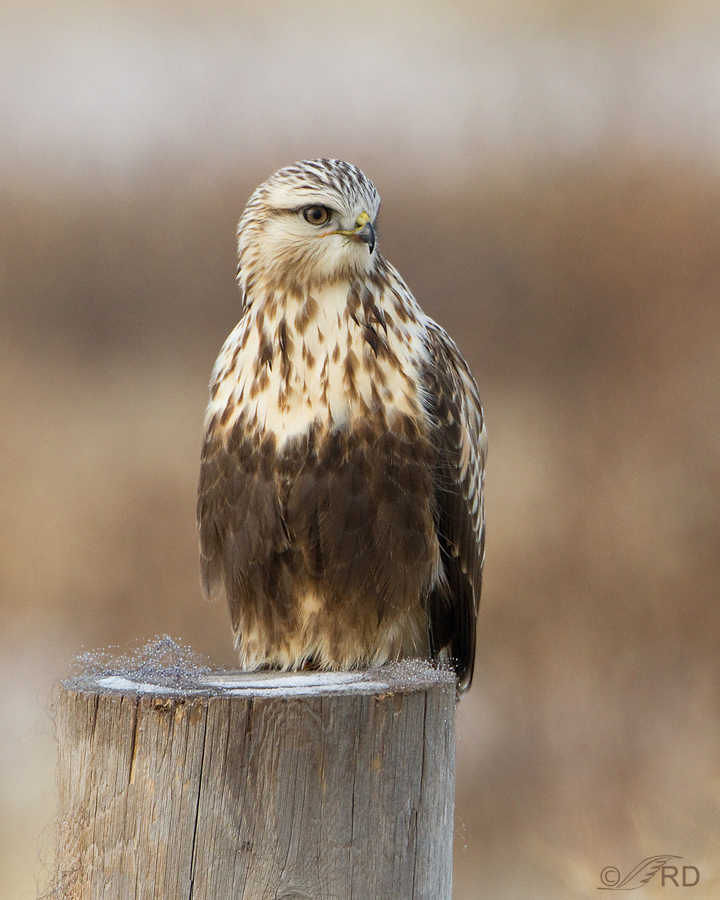
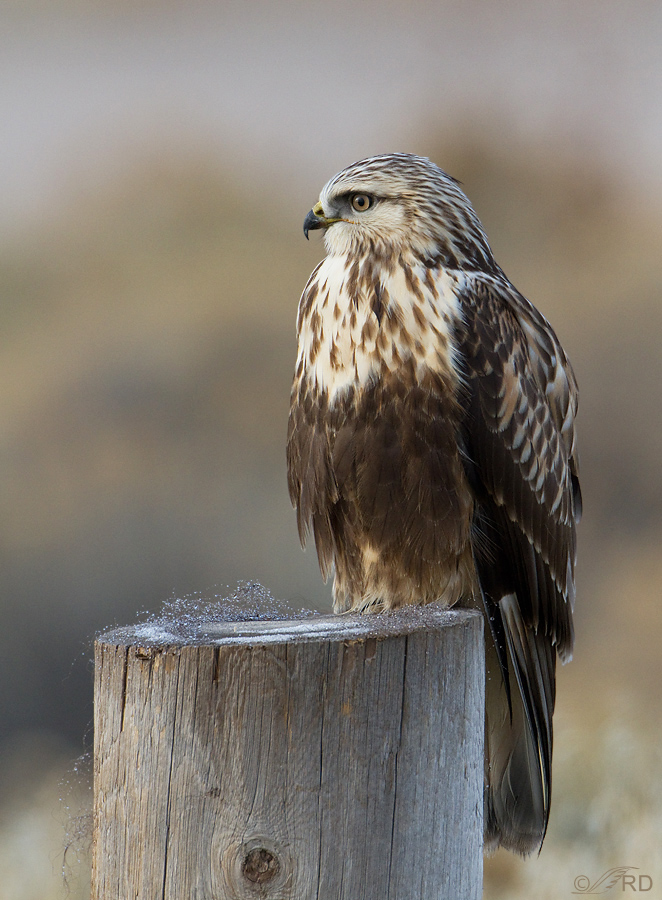
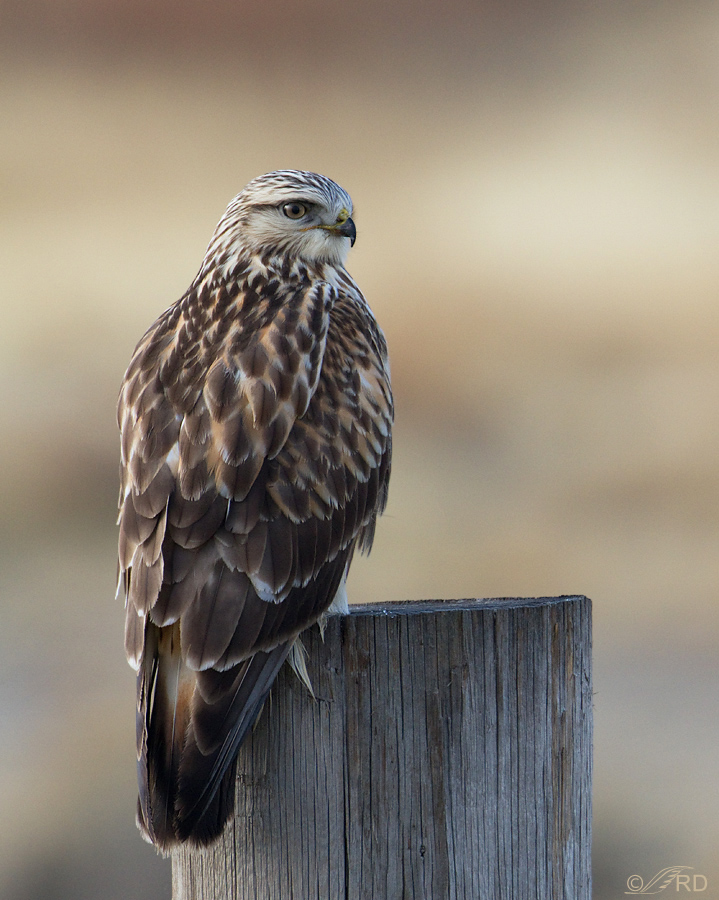
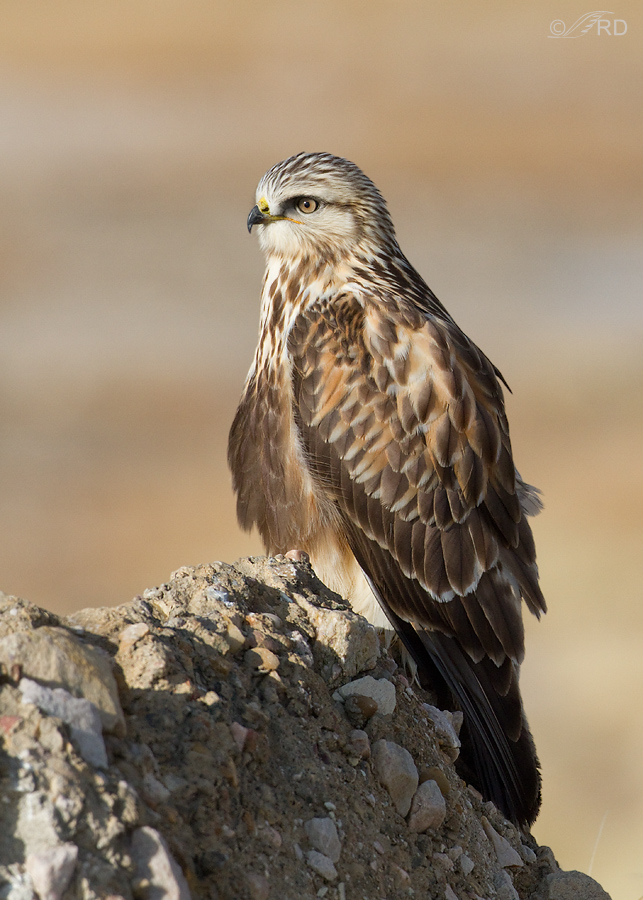
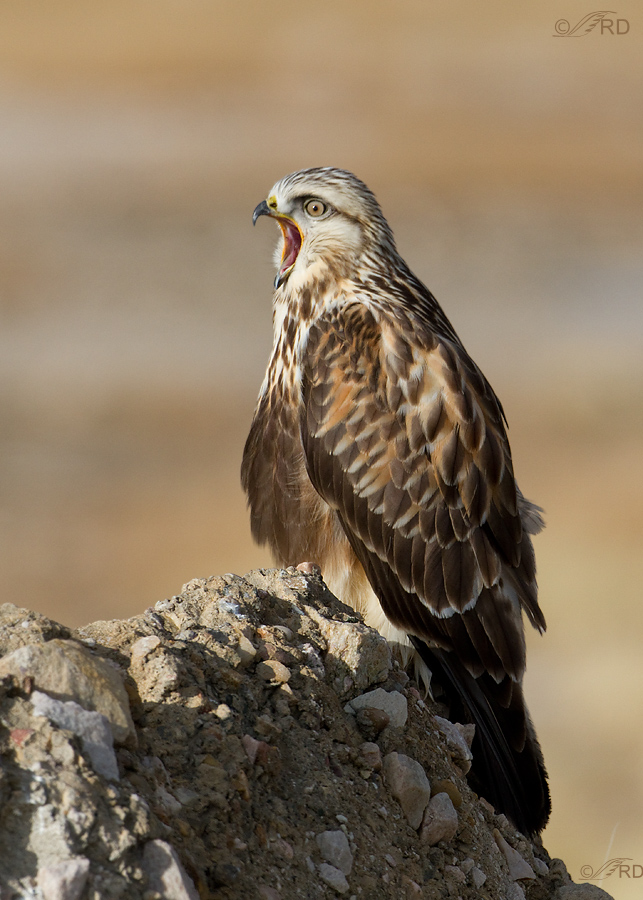
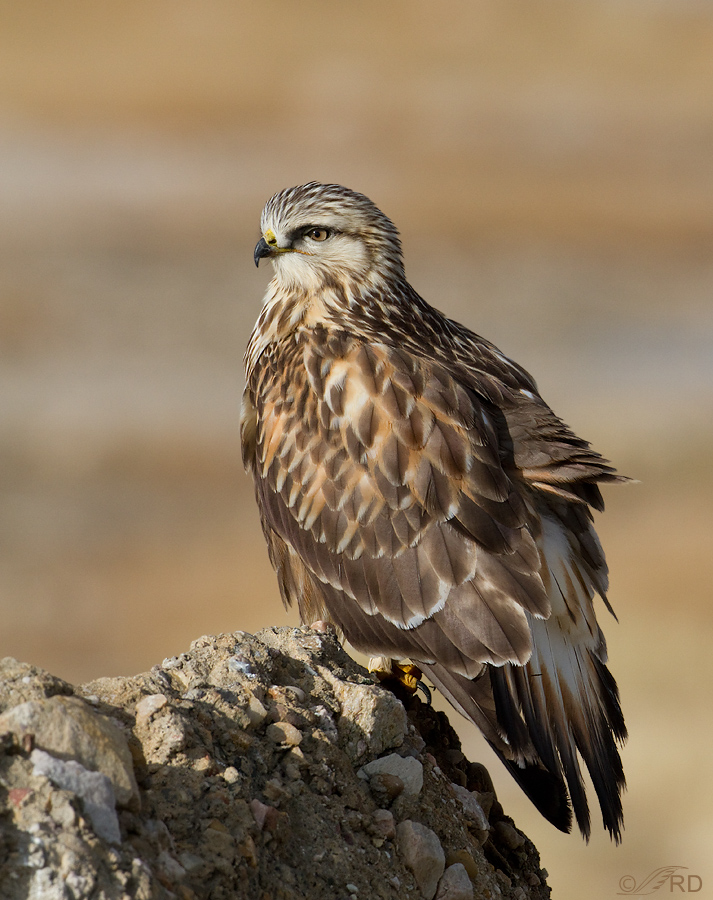

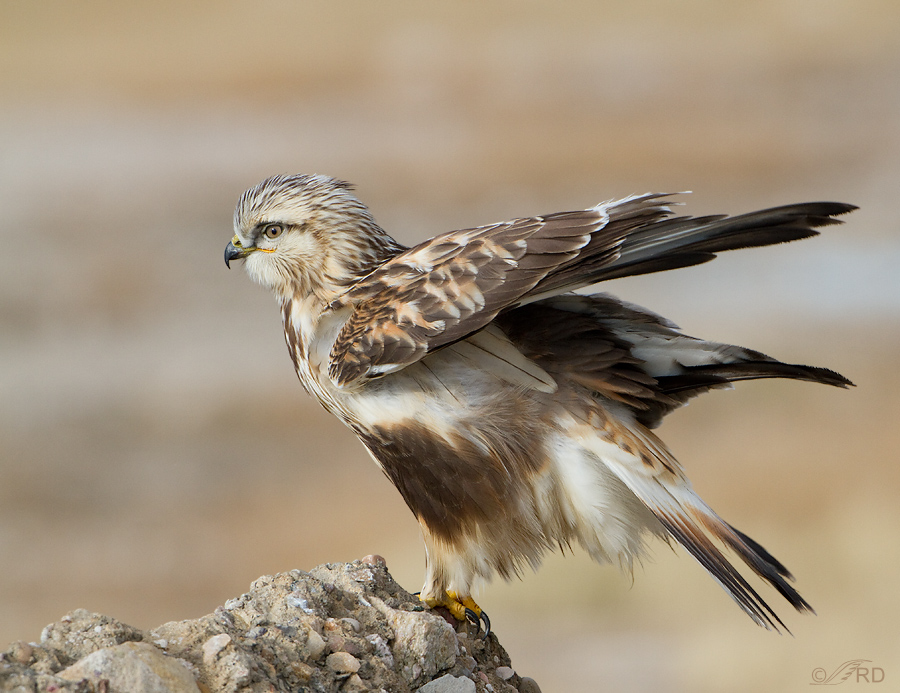
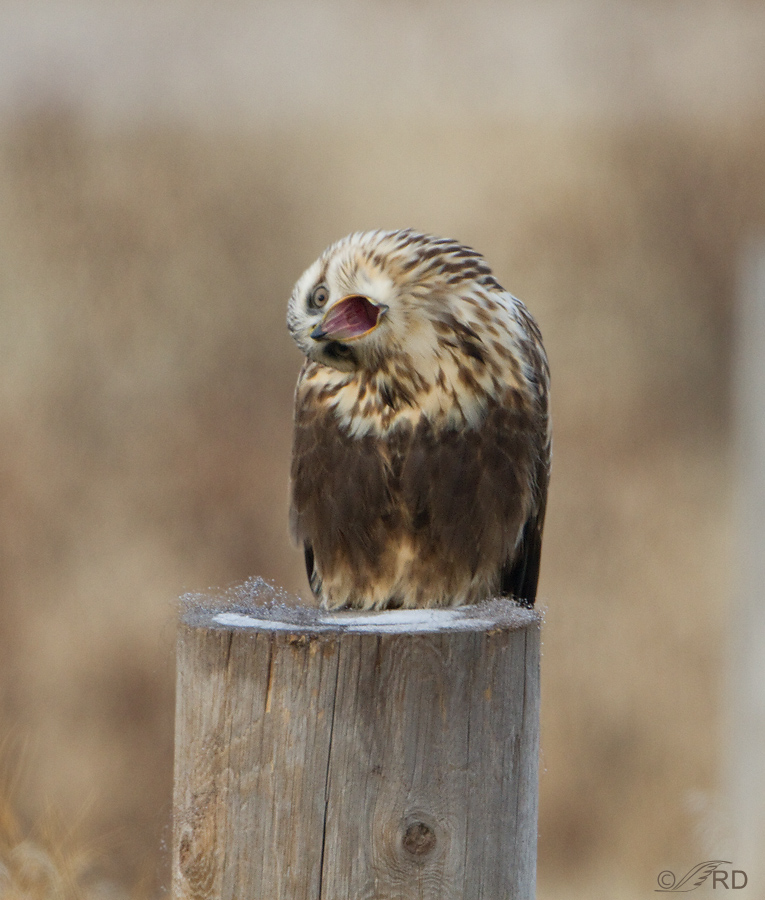
Another wonderful raptor series of images, this was a beautiful looking Rough-legged Hawk. Maybe the last image is just a territorial thing or she is just letting you know that is close enough, not sure.
Beautiful! I just started photographing birds. You’ve given me great inspiration.
You constantly amaze me with your precise, detailed descriptions and the perfect photos. We are seeing quite a few of these as we drive to Teasdale.
Great photos as always. That last picture looks like a yawning/stretching hawk to me. I’ve seen Harris’ Hawks indulge in a similar pose. Often they seem to be limbering up their necks, but this is all only a guess. Thanks for sharing.
Ron:
What a wonderful series! The ‘yawning’ and ‘preening’ shots are my favorites. As Elephant’s Child mentioned, the ‘frosted bison fur’ also captured my attention. I’m drawn to your blog by the outstanding photography, but the informative text is also a lure.
Thanks Fyn. My gear is listed in the “About Me” link at the top of the page.
Wow, fantastic shots!
GREAT PICTURES! What kind of camera do you use Ron?
I enjoyed these photos very much. They all poses beautiful detail. The sharpness, especially in the eye brings them to life for me. I love the little bits of behavior you share. I look forward the the post of the winter, a hovering shot. Only one of 3 hovering raptors, kestrel, osprey and rough legged hawks. Thank you so very much for sharing your excellent avian photography.
Wow. What incredible shots. I loved the yawn, and you have no idea how exotic ‘frosted bison fur’ sounds here. Thank you.